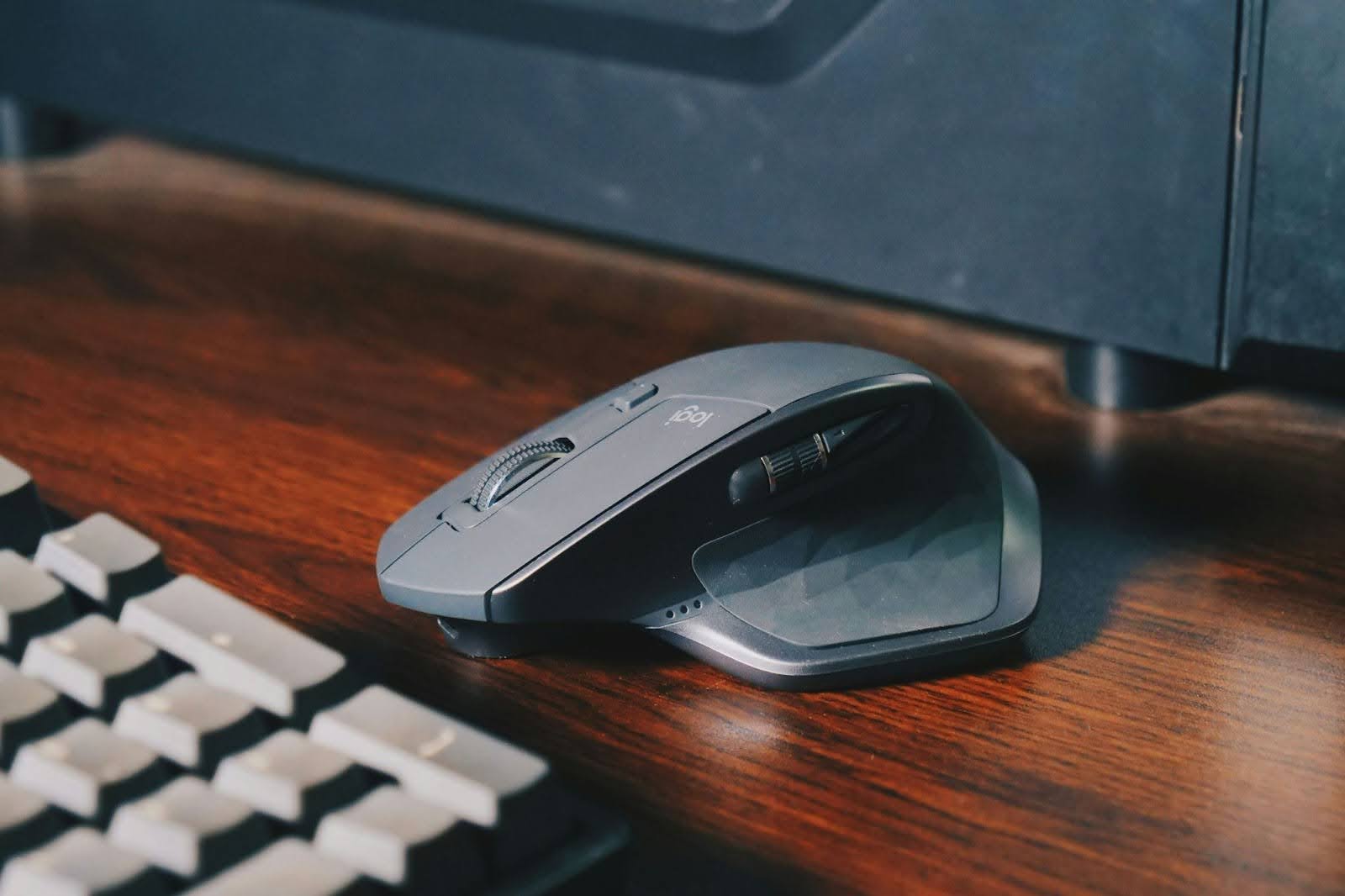Singapore’s reputation as a tech-savvy nation extends far beyond our smart city infrastructure and digital government services. Singaporeans are among the world’s most connected consumers, with smartphone penetration exceeding 90% and a population that embraces technology across all age groups.
This digital fluency has transformed how we shop for technology products, with online purchasing becoming not just convenient but often the smarter choice for informed buyers.
Whether you’re upgrading your smartphone, ensuring seamless connectivity for overseas travel, or completing your work-from-home setup with the right accessories, navigating Singapore’s online tech marketplace requires strategy, awareness, and understanding of what makes a purchase truly valuable. This comprehensive guide explores how Singaporeans can make intelligent online technology purchases that deliver quality, value, and peace of mind.
The Evolution of Tech Shopping in Singapore
Singapore’s retail landscape has undergone a remarkable transformation over the past decade. While iconic tech havens like Sim Lim Square and Funan still attract shoppers seeking hands-on browsing experiences, online platforms have emerged as formidable alternatives offering advantages that physical retail struggles to match.
The shift accelerated dramatically during the pandemic years when online shopping became a necessity rather than a preference. However, rather than reverting to old patterns as restrictions lifted, Singaporeans discovered that online tech shopping delivers genuine benefits beyond mere convenience.
Price transparency, extensive product selection, detailed specifications, user reviews, and the ability to research thoroughly before purchasing have made online channels the preferred first stop for many tech buyers.
This evolution hasn’t eliminated physical retail’s role but has redefined it. Savvy shoppers now employ hybrid strategies, researching online, perhaps visiting stores to examine products physically, then making final purchases through whichever channel offers the best value.
Understanding how to leverage online platforms effectively has become an essential skill for anyone seeking to maximize value in Singapore’s competitive tech market.
Buying Smartphones Online: The New Normal
Smartphones represent one of the most personal and important technology purchases most Singaporeans make.
These devices serve as our communication hub, entertainment center, work tool, payment method, and camera, making the purchase decision consequential and worthy of careful consideration.
Why Online Smartphone Shopping Makes Sense
The traditional objection to buying phones online, the inability to hold and examine devices before purchasing, has diminished as smartphones have become commodity products with well-understood specifications and extensive online reviews.
When you’re considering the latest iPhone or Samsung Galaxy, countless detailed reviews, comparison videos, and user testimonials provide more insight than a few minutes handling a display model in a store.
Online platforms typically offer several advantages over physical retail. Pricing tends to be more competitive due to lower overhead costs and direct-to-consumer models.
The selection available online often exceeds what any single physical store can stock, particularly for less mainstream brands or specific variants like particular storage capacities or colors.
Detailed specification sheets, comparison tools, and user reviews help informed decision-making in ways that brief interactions with sales staff rarely match.
The convenience factor can’t be overstated. Rather than traveling to multiple stores, comparing prices, and negotiating with salespeople, you can comprehensively research, compare, and purchase from home or office, with devices delivered directly to your door.
For busy Singaporeans juggling work and family commitments, this time savings represents genuine value.
Choosing Reputable Online Phone Retailers

The key to successful online smartphone purchasing lies in selecting trustworthy retailers who offer genuine products, reliable service, and adequate consumer protection. Singapore’s competitive market includes numerous options, from manufacturer-direct sales to specialized tech retailers and marketplace platforms.
When evaluating where to buy phone online, consider several critical factors. First, verify that retailers offer official Singapore sets with local warranty coverage rather than parallel imports that might lack proper support.
Singapore warranties ensure that manufacturers will service devices through authorized service centers, providing peace of mind if issues arise.
Look for retailers who provide comprehensive product information, including detailed specifications, clear warranty terms, and transparent pricing without hidden fees. Customer reviews and ratings offer valuable insight into retailer reliability, delivery speed, and after-sales support quality.
Established retailers with physical presence alongside online operations often provide the best of both worlds, convenient online shopping backed by accessible local support if needed.
Payment security deserves careful attention. Reputable platforms employ secure payment gateways and offer multiple payment options, including credit cards, PayNow, and installment plans.
Be cautious of deals that seem too good to be true; they often are, potentially involving counterfeit devices, bait-and-switch tactics, or grey market imports without proper warranty coverage.
What to Consider Before Purchasing
Before clicking “buy,” consider your specific needs and usage patterns. The most expensive flagship phone isn’t necessarily the best choice for everyone. Mid-range devices now offer impressive capabilities sufficient for most users at significantly lower prices.
Consider what features actually matter to your daily usage: camera quality, battery life, screen size, storage capacity, or specific software features, and prioritize accordingly.
Operating system choice between iOS and Android often reflects personal preference and ecosystem investment. If you’re deeply invested in Apple’s ecosystem with a MacBook, iPad, or Apple Watch, iPhone’s seamless integration delivers substantial value.
Conversely, Android’s flexibility, customization options, and device variety appeal to users who prefer choice and often lower price points.
Storage capacity deserves careful consideration since most modern smartphones don’t offer expandable storage. With high-resolution photos and videos, app installations, and downloaded content consuming space rapidly, opting for higher storage tiers often proves worthwhile despite added cost.
Calculate your current usage and project future needs. Conservatively running out of storage is frustrating and potentially costly if it forces premature upgrades.
Battery life significantly impacts daily experience. Research real-world battery performance rather than relying solely on manufacturer specifications. User reviews and tech publication battery tests provide realistic expectations for all-day usage.
For heavy users who depend on their phones throughout long workdays, prioritizing battery capacity and efficiency pays dividends in reduced charging anxiety.
Staying Connected: International Roaming Solutions

Singapore’s position as a global business hub and Singaporeans’ love of international travel make connectivity abroad a common need. Whether for business trips, family holidays, or digital nomad adventures, staying connected internationally used to mean expensive roaming charges or the hassle of buying local SIM cards at each destination.
The International Connectivity Challenge
Traditional roaming services from Singapore telcos work internationally but often at premium prices that can quickly escalate, particularly for data usage. Daily roaming passes help manage costs, but still accumulate to significant expenses over extended trips.
The alternative, buying local SIM cards at each destination, saves money but involves finding vendors, dealing with language barriers, and managing multiple SIM cards and phone numbers.
For frequent travelers, neither traditional roaming nor destination SIM cards provides optimal solutions. This gap has created opportunities for specialized roaming SIM providers who offer more flexible, economical alternatives tailored to international travelers’ needs.
Modern Roaming SIM Solutions
Contemporary roaming SIM solutions like Maxx represent a middle path that delivers convenience approaching traditional roaming with pricing closer to local SIM cards.
These services typically offer data packages covering multiple countries or regions, allowing travelers to maintain connectivity across destinations without constantly switching SIM cards or facing bill shock from traditional roaming charges.
The value proposition centers on flexibility and predictability. Rather than paying per megabyte or accepting expensive daily passes, travelers purchase data packages appropriate to their expected usage across covered destinations.
This approach provides cost certainty; you know your connectivity expenses upfront rather than discovering them on your next bill.
For Singaporeans who travel regularly to similar destinations, perhaps frequent business trips to regional hubs like Bangkok, Kuala Lumpur, or Jakarta, roaming SIM plans offer consistency and convenience. You maintain the same SIM and phone number across trips, eliminating the setup time and coordination hassles of new SIM cards at each destination.
Choosing the Right Roaming Solution
Selecting appropriate international connectivity depends on your specific travel patterns. Consider these factors when evaluating options:
Travel Frequency and Destinations: If you travel internationally once a year, your telco’s roaming passes might suffice despite higher costs. For frequent travelers, dedicated roaming SIM plans deliver better value. Verify that your typical destinations are covered by any roaming plan. You consider that regional plans might cover Southeast Asia comprehensively while offering limited coverage elsewhere.
Data Requirements: Assess your typical international data usage honestly. Light users checking email and messaging might manage with smaller packages, while those streaming video, conducting video calls, or using navigation extensively need generous data allowances. Many roaming plans offer tiered packages, allowing you to select an appropriate capacity.
Voice and SMS Needs: Data-centric plans often include limited or no voice minutes and SMS. If you primarily use WhatsApp, Telegram, or other internet-based communication, this limitation may not matter. However, if you need to make traditional phone calls, particularly for business, ensure your solution accommodates this requirement.
Device Compatibility: Most modern smartphones support multiple SIM cards (dual SIM or eSIM functionality), allowing you to maintain your Singapore number while using a roaming SIM for data. Verify your device’s capabilities before committing to any solution requiring SIM card switching.
Validity Periods: Roaming SIM plans typically have validity periods of days, weeks, or months during which purchased data must be used. Match these periods to your travel patterns to avoid waste from unused data expiring before your next trip.
Essential Accessories: Completing Your Tech Ecosystem
Smartphones and connectivity form your mobile foundation, but the right accessories dramatically enhance functionality, productivity, and user experience.
Singapore’s accessory market offers an overwhelming choice from budget options to premium products, making informed selection crucial for value and satisfaction.
The Wireless Mouse: Small Accessory, Big Impact

For anyone working remotely, conducting online studies, or spending significant time on computers, a quality wireless mouse represents one of the highest-value accessory investments you can make.
While laptops include trackpads, extended use often leads to hand strain and reduced precision compared to a proper mouse.
Why Wireless Matters
Wireless mice eliminate cable clutter, provide positioning flexibility, and create cleaner desk aesthetics. Modern wireless technology has eliminated the performance lag and connection reliability issues that once made wired mice preferable for precision work.
Bluetooth and 2.4GHz wireless connections deliver responsiveness indistinguishable from wired alternatives for all but the most demanding gaming applications.
The portability of wireless mice particularly benefits mobile professionals who work across locations. A compact wireless mouse slips easily into laptop bags, transforming any desk at home, in co-working spaces, or in client offices into a comfortable, productive workspace.
This flexibility has made wireless mice essential components of many professionals’ daily carry.
Selecting the Right Mouse
When shopping for a wireless mouse from Singapore retailers, several factors determine whether a mouse will genuinely improve your experience or become an unused purchase:
Ergonomics: Mouse comfort varies significantly based on hand size, grip style, and intended use duration. Ergonomic designs that support natural hand positions reduce strain during extended use.
Some mice feature vertical designs that maintain wrists in neutral positions, while others offer sculpted shapes accommodating different grip styles. If possible, consider the physical feel before purchasing, or buy from retailers offering easy returns if the ergonomics don’t suit you.
Sensor Quality: Optical sensors vary in precision and tracking capability. Higher-quality sensors track accurately across different surfaces and at various speeds. While ultra-high DPI sensors marketed to gamers exceed most people’s needs, even productivity-focused users benefit from accurate, responsive tracking that reduces corrections and cursor hunting.
Battery Life: Wireless mice require power, but battery life varies enormously between models. Quality mice operate for months on single battery charges, while cheaper options might require weekly recharging.
Consider whether you prefer rechargeable batteries (more environmentally friendly, no replacement costs) or standard batteries (instant replacement without waiting for charging).
Connectivity: Bluetooth mice connect directly to devices without requiring USB dongles, preserving precious ports on laptops with limited USB connections.
However, some users prefer 2.4GHz wireless using USB dongles for faster, more stable connections. Hybrid mice offering both connection methods provide maximum flexibility.
Size and Portability: Full-size mice offer maximum comfort for desk use but lack portability. Compact travel mice slip easily into bags but may compromise comfort during extended use. Consider where you’ll primarily use the mouse and whether portability matters for your workflow.
Additional Features: Modern mice incorporate useful features like programmable buttons for shortcuts, customizable scroll wheels, and software allowing sensitivity adjustments. Evaluate whether these features justify additional cost based on your usage patterns.
Beyond the Mouse: Other Essential Accessories
While mice represent high-impact accessory investments, several other categories deserve consideration for completing your tech ecosystem:
Protective Cases and Screen Protectors: Smartphones represent significant investments warranting protection. Quality cases absorb impact from drops while maintaining device aesthetics and usability. Screen protectors prevent scratches and cracks, with tempered glass options offering excellent protection without compromising touch sensitivity or screen clarity.
Power Banks: Singapore’s infrastructure provides abundant charging opportunities, but portable power banks offer security for days away from outlets or when battery-intensive activities drain charges quickly. Modern power banks offer high capacities in compact forms, with fast-charging capability that quickly replenishes device batteries.
Wireless Earbuds: True wireless earbuds have become essential accessories for many Singaporeans, providing private audio for calls, music, and video without cables. Quality varies enormously from budget options offering basic functionality to premium models with active noise cancellation, transparency modes, and exceptional audio quality. Consider your primary use case when selecting commuting, exercise, work calls, or casual listening, and prioritize features accordingly.
Charging Cables and Adapters: Quality charging cables last longer and charge faster than cheap alternatives. Consider investing in durable braided cables, right-angle connectors for comfortable use while charging, and longer cables that provide positioning flexibility. Multi-port adapters and wireless charging pads reduce cable clutter while keeping multiple devices charged.
Laptop Stands and External Keyboards: For home office setups, elevating laptops to proper eye level prevents neck strain, while external keyboards maintain comfortable typing positions. These relatively inexpensive accessories dramatically improve ergonomics for anyone spending hours at a computer.
Strategic Shopping: Maximizing Value in Singapore’s Market

Understanding what to buy is only half the equation; knowing how and where to buy maximizes value and satisfaction.
Timing Your Purchases
Singapore’s retail calendar includes predictable sale periods offering significant savings. The Great Singapore Sale (mid-year), 11.11 (November), Black Friday (November), 12.12 (December), and Chinese New Year sales (January/February) bring substantial discounts across tech categories. If your purchase isn’t urgent, timing it around these events can save 20-30% or more.
However, balance savings against need. If your current phone is failing or you’re traveling soon and need connectivity solutions, waiting months for sales might not make sense. Consider whether current devices adequately serve your needs or if upgrades provide tangible improvements justifying immediate purchase.
Price Comparison and Research
Online shopping facilitates easy price comparison across retailers. Before purchasing, check prices at multiple vendors; differences of 10-20% for identical products aren’t uncommon. Price comparison sites and shopping apps aggregate pricing, though always verify prices directly with retailers, as third-party information may not update immediately.
Read reviews thoroughly, focusing on verified purchaser reviews over potentially incentivized or fake reviews. Look for patterns in feedback. Individual complaints might reflect unusual circumstances, but recurring issues across reviews indicate genuine problems. Professional reviews from tech publications provide detailed analysis, though remember these often use ideal testing conditions that may not reflect real-world performance.
Warranty and After-Sales Support
Warranty coverage deserves serious consideration, particularly for expensive purchases like smartphones. Singapore warranties ensure local service center support and parts availability. Grey market or parallel import devices might cost less initially but lack official local support, potentially leaving you with expensive out-of-warranty repairs for issues that would be covered under Singapore warranties.
Read warranty terms carefully. Some retailers offer extended warranties or additional protection plans. Evaluate whether these represent value based on device type, your usage patterns, and your comfort with potential out-of-pocket repair costs.
For devices you’ll use heavily or depend upon for work, extended protection often proves worthwhile despite added upfront cost.
Payment Methods and Security
Use secure payment methods offering buyer protection. Credit cards typically provide better fraud protection and dispute resolution than debit cards or bank transfers. Many credit cards offer additional purchase protection, extended warranties, or price protection automatically.
Be cautious about deals requiring unusual payment methods like bank transfers to individuals or cryptocurrencies.
Legitimate retailers accept standard payment methods and provide official receipts. If a deal seems suspiciously cheap or the payment process feels unconventional, it probably warrants skepticism.
Building Your Complete Tech Setup
The smartest approach to tech purchases considers how devices and accessories work together as an ecosystem rather than viewing each purchase in isolation.
Ecosystem Considerations
Apple users benefit from seamless integration across iPhones, MacBooks, iPads, and Apple Watches, shared clipboards, universal device unlocking, continuous work handoff, and more. This integration adds value that individual device specifications don’t capture. Similarly, Samsung’s ecosystem connects phones, tablets, laptops, and wearables with enhanced interoperability.
Consider whether committing to an ecosystem provides sufficient benefit to influence device choices. Ecosystem lock-in can feel limiting, but the convenience and enhanced functionality often outweigh flexibility concerns for users heavily invested in particular platforms.
Future-Proofing Investments
Technology evolves rapidly, but thoughtful purchases extend useful lifespans. Consider whether devices support future standards, 5G connectivity, WiFi 6, USB-C charging, and adequate storage for growing needs. Buying slightly more capability than you currently need often proves economical if it extends useful life by even six months compared to buying the bare minimum.
However, balance future-proofing against present needs and budget. Buying top-tier flagship phones for email and social media might be future-proof, but it’s potentially wasteful if mid-range devices serve your needs equally well. Focus future-proofing on areas where you genuinely anticipate growth in your usage patterns.
Conclusion
Smart tech shopping in Singapore combines understanding your genuine needs, researching thoroughly, choosing reputable vendors, timing purchases strategically, and thinking holistically about how devices and accessories work together.
The abundance of online options empowers consumers with unprecedented choice, price transparency, and convenience, but also requires discernment to separate genuine value from marketing hype and too-good-to-be-true deals from legitimate bargains.
For Singaporeans, online tech shopping has evolved from an alternative channel to a preferred method for many categories.
Phones, connectivity solutions, and accessories purchased online often deliver better value, greater selection, and more convenience than traditional retail while still providing adequate consumer protection and support when you choose established, reputable vendors.
Whether you’re upgrading your smartphone, ensuring seamless connectivity for international travel, or completing your work-from-home setup with productivity-enhancing accessories, approaching purchases strategically with a clear understanding of your needs, thorough research, and attention to factors beyond just price ensures satisfaction and value that extends far beyond the initial excitement of unboxing new tech.
